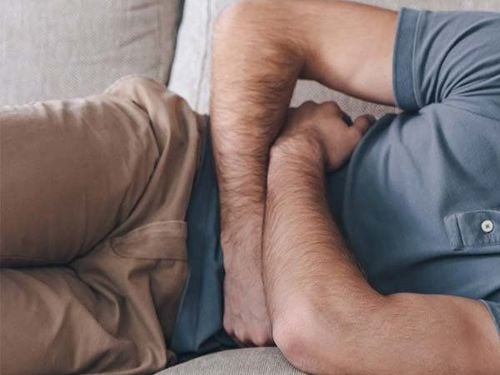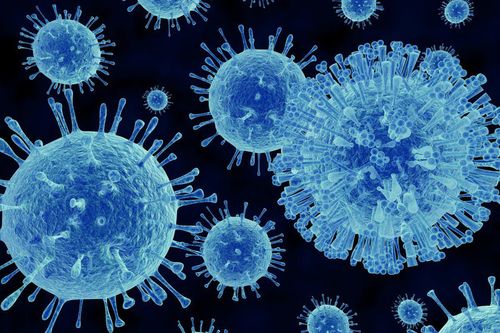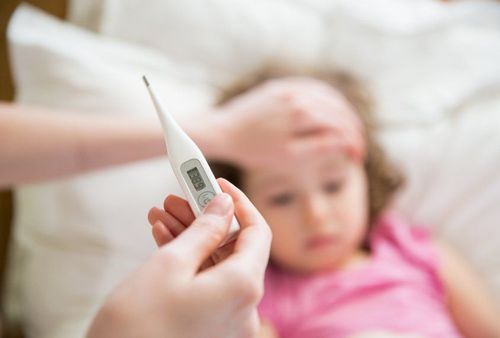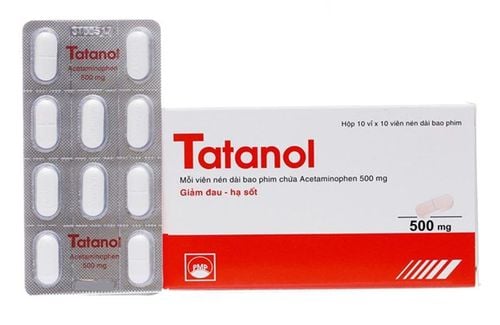This is an automatically translated article.
The article was professionally consulted by Assoc. Prof. TS.BS Huynh Thoai Loan - Head of Pediatrics - Neonatology Department, Vinmec Central Park International General Hospital. Uncle is one of the leading experts in Pediatrics - Neonatology in Ho Chi Minh City with nearly 30 years of experience in examining and treating diseases of pediatric endocrinology, pediatric nephrology and other pediatric - neonatal problems.Fever is a normal response of the body to fight off invaders such as bacteria and viruses. However, when a child has a fever, parents will be worried and anxious to find the best way to reduce the fever and take care of the child.
1. Treatment when the child has a fever
Dress the child in loose, airy clothes to reduce body heat. Let the child lie in a cool, spacious, clean place. Give the child plenty of water to drink. When the infant has a fever, the feeding frequency and quantity should be increased. For children over 1 year old, children can drink more juice, especially vitamin C-rich juices such as orange juice, tangerine juice, lemon juice... Wipe the child's body with a warm towel. Use 5 soft towels dipped in warm water, wringed out and placed in the following positions: forehead, two armpits, two groins of the child. The warm water that evaporates will cool the child's body temperature. Give the child fever-reducing medicine. If the fever-reducing medicine doesn't work or the child has unusual signs, the child should be taken to the hospital for examination.Trắc nghiệm: Nhận biết sớm dấu hiệu chậm phát triển thể chất và trí tuệ ở trẻ
Nếu 6 tuổi không biết đếm số, 7 tuổi vẫn chưa phân biệt được giữa thực tế và tưởng tượng thì có thể bé chậm phát triển thể chất và trí tuệ hơn so với bạn bè cùng lứa. Bạn đã nhận biết được các dấu hiệu bất thường sớm này chưa? Cùng làm nhanh bài trắc nghiệm sau để trang bị thêm kiến thức cho mình nhé!
The following content is prepared under supervision of Thạc sĩ, Bác sĩ y khoa, Ma Văn Thấm , Nhi , Phòng khám Đa khoa Quốc tế Vinmec Dương Đông(Phú Quốc)
2. When should children take fever-reducing medicine?
Fever is a beneficial response of the body, so parents do not need to worry too much. Excessive use of antipyretics will cause adverse effects on the health of children. Therefore, parents only give children fever-reducing medicine when the child has a fever of 38.5 degrees Celsius or higher.
3. What kind of fever-reducing medicine is given to the child?
Commonly used antipyretics for children are paracetamol packs or syrups. The drug is effective after about 30 minutes of use and lasts about 4-6 hours, causing few side effects.
Give the child medication with a dose corresponding to the child's weight. Children can take fever-reducing medicine 3-4 times a day, 4 hours apart each time.
Read the instructions for use carefully before giving the medicine to your child.
In addition, do not combine many antipyretic drugs at the same time. This not only does not add to the effect, but can also cause bad effects on the child's body.
4. Can a child with a fever go outside?
Many parents, when they see that their child has a fever, usually only let them stay at home, not going out. If the child has a mild fever and still eats and plays normally, parents should not be too strict and keep the child at home forever. Children can be allowed to go outside to play in cool and favorable weather.In case the child has a high fever, the child should lie down at home, sometimes go to the stadium for a short time.
5. Preventing dehydration and nutrition for children when they have a fever
Children with a high fever often lose water and salt, as well as energy and water-soluble vitamins. Parents should actively rehydrate their children by giving them lots of water to drink, especially fruit juices rich in vitamin C and B vitamins. For young children who are still breastfed, they should increase the amount of suckling and feeding.Should give children soft, easy-to-digest foods, thin porridge or soups to provide more water for the body. If you see your child urinating pale yellow, urinating every 4 hours means that the child has been rehydrated with the necessary amount of water.

6. Is it necessary to give fluids to the child when he has a fever?
In case the child has a fever but is still awake and is given enough water through the diet, there is no need for intravenous fluids.In case the child is severely dehydrated, if the child has stopped eating and drinking for a long time, then it is necessary to receive intravenous fluids and should only be done in a hospital or a medical facility.
7. What to do when a child has a high fever convulsion?
Children with high fever can lead to convulsions, especially children aged 6-18 months. The seizure lasts less than 5 minutes, after which the child is usually awake. However, high fever convulsions can lead to dangerous complications such as: suffocation, lack of oxygen to the brain causing brain damage...
When seeing a child with a high fever convulsing, parents should note:
Put the child on his side to let the phlegm and mucus flow out, not blocking the airway If the child has a lot of sputum, it must be aspirated Use antipyretic medicine inserted rectally Remove the child's clothes to lower the temperature Use a warm towel wipe the child's body so that the child can quickly reduce the fever
8. When to take your child to the hospital?
When a child has a fever, it is necessary to immediately go to the hospital for examination if:Children under 3 months of age The child has a high fever above 39.5 degrees Celsius The child has a high fever with symptoms of crying that cannot be comforted The child has a high fever with signs of struggling or lethargy It is difficult to wake up Children with high fever with stiff neck, pain when touching the back of the neck and head Children with high fever with rash Children with high fever with difficulty breathing Children with high fever who refuse to eat and drink for a long time Children with high fever with vomiting of everything High fever with bloody urine Children with high fever having convulsions... Children taking fever-reducing drugs but it doesn't work Children with recurrent high fever Children with high fever for more than 3 days and not getting better

9. Mistakes when taking care of children with fever
When taking care of a child with a fever, parents should avoid the following:
Do not warm the child, do not let the child wear too many clothes because this can make the child's body temperature even higher. Even if a child has a fever and chills, they should only wear loose and airy clothes, maybe a thin blanket. Do not let your child stay in a room that is too tight or secret. Do not use cold towels, ice, alcohol, or alcohol to wipe young people. Do not overuse fever-reducing drugs. Use only when absolutely necessary. Should let the child's body form a defense mechanism, "face" itself with pathogens. Do not be subjective when a child under 3 months of age has a fever When a child has a high fever convulsion, do not use hard objects to open the child's mouth or forcefully hold the baby. Should follow the steps mentioned above Do not arbitrarily apply folk remedies or give children indiscriminate use of drugs Do not use aspirin to reduce fever in children because it can cause brain damage in children. doctors when you need medical help.
Please dial HOTLINE for more information or register for an appointment HERE. Download MyVinmec app to make appointments faster and to manage your bookings easily.















